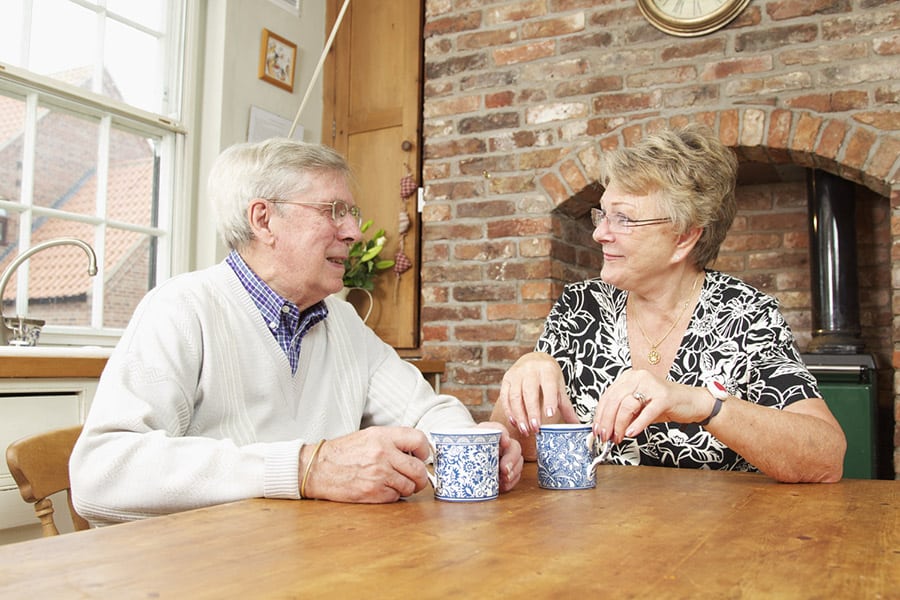Guest article: Carers Week 2020 – Making Caring Visible

In this article for Carers Week 2020, Gavin Bashar, UK Managing Director of connected care and health solutions provider Tunstall Healthcare, discusses the role of assistive technology in supporting carers and how we can keep them visible through offering support and resources with AT Today.

According to Carers Week, there are over 6.5 million carers in the UK, but due to the coronavirus outbreak, more people than ever are taking on caring responsibilities for vulnerable people living with a disability and mental or physical illness.
Caring impacts every aspect of daily life from relationships and health to finances and work, and many carers report feelings of isolation and that their role is hidden or isn’t appreciated by society. This is exacerbated further by crises such as COVID-19 where the loss of funding for charities has led to a decrease in support and there is the increased worry of protecting the vulnerable people they care for from infection and hospitalisation.
Caring without the right information and support can be challenging, therefore carers must have constant access to the information, guidance and the support they need to continue caring successfully, whilst also maintaining their own health and wellbeing.
This Carers Week (8-14 June 2020), Gavin discusses the role of assistive technology in supporting carers and how we can keep them visible through offering support and resources.
The role of technology
Technology can greatly support carers and help relieve the pressures they experience. It also enables them to care for someone for longer at home, so that they can stay in familiar surroundings for as long as possible, helping them to enjoy a better quality of life.
Technology such as community alarm systems, also known as telecare or assistive technology, helps to manage common risks such as fires or falls, giving reassurance to carers that they will be alerted if an event occurs.
Appropriate, unobtrusive sensors can be placed around the home, which, if triggered, send an alert via a central home unit to a specialist monitoring centre, where trained operators can alert a carer, keyholder or the emergency services. Telecare can also be used to alert a carer in the home directly via a pager or during the night by a vibrating pad under the pillow.
Systems are tailored to individual circumstances. For example, a sensor placed under the seat pad of a chair can alert a carer if their loved one leaves their seat. This means the carer can carry on with daily life, such as making dinner or putting the washing out, knowing they will be notified if the person they care for may be at risk.
Making caring visible
There are many stakeholders who are integral in ensuring that carers are visible and enabling them to receive the support they need to fulfil their role successfully. Many carers don’t know who to contact or how to secure the advice they need and during lockdown and social distancing, this can become a significant worry.
GPs, employers and local governments are all crucial in ensuring carers are healthy and happy by offering much-needed support and raising awareness of their important role. Applying for a carer’s assessment, taking a break from caring or securing the right equipment to care safely can all provide benefits and connect carers to a range of support which provides up-to-date information and advice.
Caring can also lead to loneliness and feeling disconnected from friends and family. Loved ones should regularly keep in touch, both in person or over video calls and the phone. This will support carers in feeling socially and emotionally connected and ensure they are visible with friends and family.
The more visible carers are to loved ones, our health and social services, and the public, the more their needs will be recognised and they’ll be able to successfully carry out their caring responsibilities without negatively impacting their emotional and physical wellbeing.
Resources available
Caring can present many different issues which carers can struggle with. However, available resources offer support in meeting these challenges. Whether carers are unaware of the resources available or are struggling to navigate services, it’s important that the right information and resources are deployed in each individual situation.
Carers’ Assessments are available for unpaid carers by local authorities to understand whether individuals are eligible for support services or financial help such as Carers’ Allowance. Respite care can also be a great option for people who simply need a break from their caring responsibilities. Local authorities will provide a personal budget for anyone eligible for respite care, whether this is for a few hours during the day, or a short time in residential care.
Most local authorities also offer some form of community alarm or telecare service; a quick search on the relevant authority’s website or a call to its social services department will give more information on what is available in different areas and any associated costs. Some services are free to those who qualify, some are subsidised and costs start from £3-£5 per week. Some services may cost more depending on the required equipment.
It’s crucial that technology and other services are readily available and constantly accessible so that carers feel safe and supported. Stakeholders should also make sure to keep in regular contact so that they remain visible and can easily access help if needed.
For more information on how assistive technology can benefit carers and the resources available, visit: www.tunstall.co.uk

